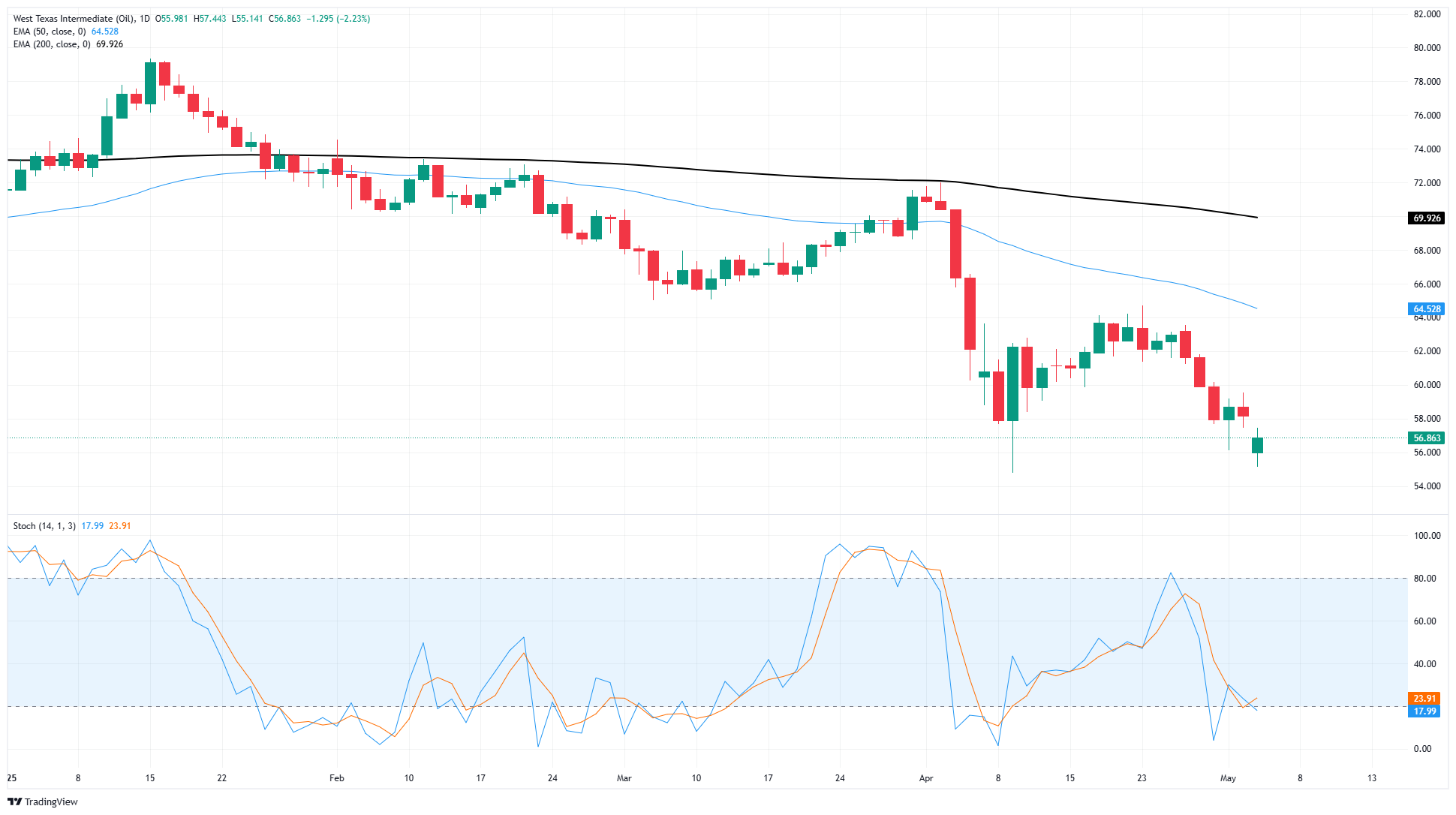Crude Oil prices stabilize after OPEC output hike sends barrel bids lower
- Crude Oil prices are clawing back near-term losses sparked by a planned OPEC output increase.
- WTI briefly plunged below $65 per barrel as global glut fears resurface.
- OPEC is poised to reverse its self-imposed two-year production cut beginning in June.
West Texas Intermediate (WTI) Crude Oil prices are stabilizing on Monday, clawing back near-term losses after the Organization of the Petroleum Exporting Countries (OPEC) announced it would begin stepping up its internal production quotas beginning in June. The move is broadly seen as a way to punish smaller OPEC member nations that flouted voluntary production caps, including Kazakhstan and Iraq.
Global Crude Oil glut looms ahead
Energy markets are still clinging to hope that incoming energy sector sanctions on Russia will sop up the looming oversupply from OPEC production increases. However, hard figures remain elusive, and it remains unclear if the Trump administration will follow through on sanctions against Russia, a known favorite of President Trump. According to data compiled by Bloomerg, Russian energy exports rose to a five-month high in March, and weekly Crude Oil exports from Russia have also risen on a week-on-week basis through the end of April.
WTI price forecast
WTI barrel bids briefly tumbled back below $56.00 on Monday, dipping to a near-term low of $55.14 before recovering ground through the intraday session to the $57 region. US Crude Oil prices remain down sharply from mid-April’s peaks near $64.00 per barrel. However, a technical floor appears to be priced in at the $56.00 level.
WTI daily chart

WTI Oil FAQs
WTI Oil is a type of Crude Oil sold on international markets. The WTI stands for West Texas Intermediate, one of three major types including Brent and Dubai Crude. WTI is also referred to as “light” and “sweet” because of its relatively low gravity and sulfur content respectively. It is considered a high quality Oil that is easily refined. It is sourced in the United States and distributed via the Cushing hub, which is considered “The Pipeline Crossroads of the World”. It is a benchmark for the Oil market and WTI price is frequently quoted in the media.
Like all assets, supply and demand are the key drivers of WTI Oil price. As such, global growth can be a driver of increased demand and vice versa for weak global growth. Political instability, wars, and sanctions can disrupt supply and impact prices. The decisions of OPEC, a group of major Oil-producing countries, is another key driver of price. The value of the US Dollar influences the price of WTI Crude Oil, since Oil is predominantly traded in US Dollars, thus a weaker US Dollar can make Oil more affordable and vice versa.
The weekly Oil inventory reports published by the American Petroleum Institute (API) and the Energy Information Agency (EIA) impact the price of WTI Oil. Changes in inventories reflect fluctuating supply and demand. If the data shows a drop in inventories it can indicate increased demand, pushing up Oil price. Higher inventories can reflect increased supply, pushing down prices. API’s report is published every Tuesday and EIA’s the day after. Their results are usually similar, falling within 1% of each other 75% of the time. The EIA data is considered more reliable, since it is a government agency.
OPEC (Organization of the Petroleum Exporting Countries) is a group of 12 Oil-producing nations who collectively decide production quotas for member countries at twice-yearly meetings. Their decisions often impact WTI Oil prices. When OPEC decides to lower quotas, it can tighten supply, pushing up Oil prices. When OPEC increases production, it has the opposite effect. OPEC+ refers to an expanded group that includes ten extra non-OPEC members, the most notable of which is Russia.